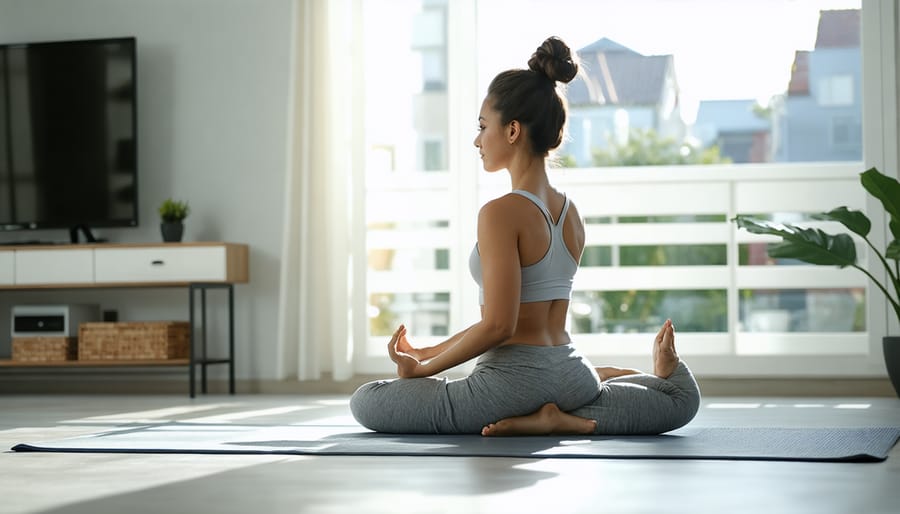Transform your daily life by mastering the five essential elements of well-being – a holistic approach backed by the scientific benefits of natural light and decades of psychological research. These interconnected pillars – physical vitality, mental clarity, emotional balance, social connection, and environmental harmony – form the foundation of a truly fulfilling lifestyle.
Like a well-orchestrated symphony, these elements work together to create a life of purpose and contentment. Physical well-being energizes your daily activities, while mental clarity sharpens your decision-making. Emotional balance helps you navigate life’s challenges with resilience, and social connections provide the support network essential for long-term happiness. Environmental harmony ensures your surroundings nurture rather than drain your energy.
Understanding and actively cultivating these five elements isn’t just about feeling good – it’s about creating a sustainable, joy-filled life that radiates positive energy to everyone around you. Whether you’re looking to make small improvements or transform your entire lifestyle, these foundational principles offer a clear pathway to enhanced well-being.

Physical Well-being: Sunlight’s Impact on Your Health
Strategic Window Placement for Maximum Light Benefits
Strategic window placement can transform your living space into a haven of natural light, significantly impacting your well-being throughout the day. Start by mapping your home’s sun exposure – note which directions your windows face and track sunlight patterns across different seasons.
East-facing windows are perfect for morning spaces like kitchens and breakfast nooks, helping you sync with your natural circadian rhythm. Place your desk or workspace near these windows to boost morning productivity. South-facing windows provide consistent daylight throughout the day, making them ideal for living rooms and home offices where you spend most of your time.
Consider installing larger windows or glass doors in rooms where you spend daylight hours. If structural changes aren’t possible, use mirrors strategically to reflect and amplify existing natural light. Position them opposite windows to double the light’s reach and brighten dark corners.
For bedrooms, west-facing windows can be both a blessing and a challenge. While they offer beautiful sunset views, they may require adjustable window treatments to manage afternoon heat and glare. North-facing windows provide soft, consistent light that’s perfect for art studios or reading nooks.
Remember to keep windows clean and unobstructed, trimming any outside vegetation that might block light. Regular maintenance ensures you’re maximizing every ray of beneficial natural light entering your home.
Mental Well-being: Brightening Your Mood Naturally
Creating Light-filled Work and Relaxation Spaces
Natural light is a powerful element in creating spaces that nurture both productivity and relaxation. Start by identifying areas in your home where you spend the most time working or unwinding. Consider optimizing your workspace layout by positioning desks and seating near windows to maximize exposure to natural daylight.
Strategic placement of mirrors can amplify existing light, while choosing light-colored, reflective surfaces for walls and furniture helps bounce daylight throughout the room. Opt for sheer window treatments that filter rather than block sunlight, and keep windows clean to maximize light transmission.
For spaces with limited natural light, complement daylight with mood-enhancing lighting solutions that mimic natural light patterns. Consider installing skylights or solar tubes in darker areas, and maintain a clutter-free environment to prevent objects from blocking precious daylight.
Remember to create distinct zones for work and relaxation, each with appropriate lighting levels to support different activities throughout the day. This thoughtful approach to lighting design can significantly improve your daily well-being and productivity.

Social Well-being: Light-Enhanced Gathering Spaces

Designing Open, Light-Filled Social Areas
Creating social spaces that promote connection starts with understanding wellness sanctuary design principles. Begin by maximizing natural light through strategic window placement and using light-reflecting surfaces. Consider removing unnecessary walls or replacing them with glass partitions to create an open-concept feel that encourages interaction.
Arrange furniture in conversational groupings, facing each other rather than toward a TV or wall. Include comfortable seating options at various heights – sofas, chairs, and ottomans – to accommodate different preferences and group sizes. Add warm, inviting touches like soft throw pillows and blankets to make the space more welcoming.
Consider incorporating a central gathering point, such as a kitchen island or coffee table, where people naturally congregate. Use adaptable lighting solutions that can be adjusted throughout the day, complementing natural light and creating the right ambiance for different social activities. Keep decor minimal but meaningful, allowing the space to feel both organized and lived-in.
Environmental Well-being: Sustainable Light Solutions
Energy-Saving Light Management Techniques
Make the most of natural light by strategically arranging your furniture to avoid blocking windows. Install light-colored, adjustable window treatments that can be easily opened during daylight hours and closed for privacy. Consider using mirrors to reflect and amplify natural light throughout your space. For artificial lighting, opt for LED bulbs with adjustable brightness and color temperature settings. Install motion sensors in less-frequented areas and dimmer switches in primary living spaces. Create lighting zones that can be controlled independently, allowing you to illuminate only the areas you’re using. Remember to regularly clean windows, mirrors, and light fixtures to maximize their efficiency. Smart home integration can help automate your lighting schedule to match your daily routine, reducing energy waste while maintaining optimal light levels throughout the day.
Financial Well-being: Cost Benefits of Natural Light
Natural light isn’t just good for your health – it’s also a smart financial investment. Homes designed to maximize daylight typically see a 10-15% reduction in energy costs through decreased artificial lighting needs and more efficient temperature regulation. During winter months, natural light helps warm your space, while properly positioned windows and skylights can reduce summer cooling costs through strategic ventilation.
Property values also get a significant boost from natural light optimization. Real estate experts consistently report that homes with abundant natural light sell faster and command higher prices – often 2-5% more than similar properties with less daylight exposure. Buyers are increasingly prioritizing bright, well-lit spaces, making natural light a valuable selling point.
The initial investment in larger windows, skylights, or light tubes typically pays for itself within 5-7 years through energy savings alone. Plus, you’ll spend less on artificial lighting fixtures and bulb replacements. For renters, apartments with good natural light often maintain their value better, potentially leading to more stable rent rates and better returns on your security deposit.
Consider tracking your energy bills before and after implementing natural light improvements – you might be surprised by the savings!
Natural light isn’t just a nice-to-have feature; it’s a fundamental element that ties together all aspects of our well-being. By integrating more daylight into your living spaces, you’re investing in your physical health, emotional balance, social connections, mental clarity, and spiritual wellness. Start small by rearranging furniture to maximize window access, keeping windows clean, and using light-colored window treatments. Consider creating a morning routine that involves opening blinds and spending time in naturally lit areas. Remember, even minor changes in how you utilize natural light can lead to significant improvements in your overall quality of life. The key is to be intentional about incorporating daylight into your daily routine and creating spaces that welcome the sun’s nurturing rays.
